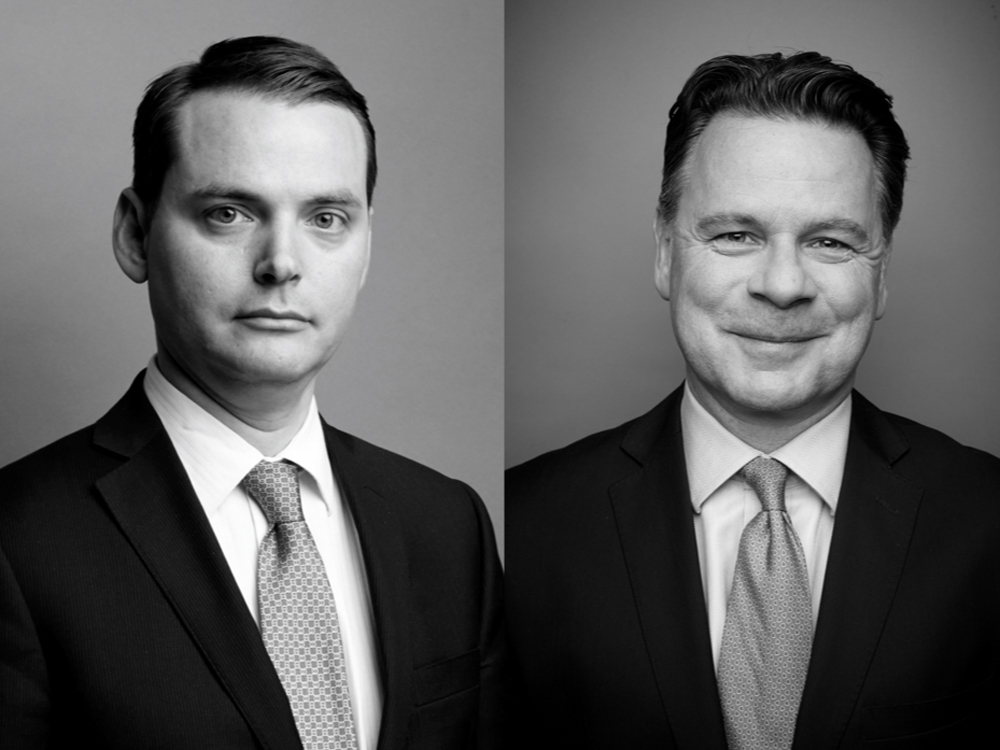Diary of an Agent: Jason Mansfield and Mark Harvey
The pandemic has sent activity in international markets into overdrive.
4 minutes to read

Jason Mansfield (JM) left covers the North American region working closely with partner Douglas Elliman Real Estate. Mark Harvey (MH) right is head of Knight Frank’s International Department.
Can you tell me more about your role?
JM - I manage the relationship for clients wishing to buy or sell property in the United States and Canada. Where possible I try to meet them face to face in London. Ultimately, I look after their transaction from start to finish.
MH – I oversee Knight Frank’s International Department in London and run our Associate network in Europe, the Caribbean and USA.
Can you give me an idea of the buyers you assist?
JM – There’s a very strong connection between London and New York, so a large proportion of buyers are targeting there. I recently assisted a British client who is retiring and wanted a base in New York for when flights resume, and the theatres reopen. Buying for investment is also popular in New York. We are also active throughout California, Florida, Colorado, Texas, and Massachusetts; in Canada, we mainly focus on Vancouver, Toronto and Montreal.
MH – France forms a significant proportion of the International Department’s residential activity and with 21 offices it is also the most visited country in the world. Being the most popular second-home destination after Spain, it constitutes an important part of our international focus.
What impact did the first lockdowns have?
JM - New York went into lockdown around the same time as the UK and those that had the ability to leave the city did. If it was a choice between a two-bedroom flat in Manhattan or a family house in The Hamptons, which one would you choose? Therefore, just as in the UK, the country and commuter markets in the US performed exceptionally well in 2020.
MH – We feared the worst and had no idea how things would pan out. After a few weeks in lockdown we began to see a significant increase in enquiry levels, which turned into something of a stampede once restrictions were lifted and markets reopened. The first, and as it turned out the largest wave of buyers in Europe, turned out to be domestic. They were quickly followed by their continental neighbours and finally by the British.
When did the recovery take hold and what impact has it had?
JM – New York City was exceptionally quiet until 22 June when in-person viewings resumed. With the reopening of the market after lockdown, buyers began to return throughout the summer, and we started to see pent-up demand begin to be released. With pricing already at a realistic level, it built to a fever pitch and hit a peak of activity in December. It has remained busy since, and secondary markets throughout the US are also performing very strongly.
MH – We’ve seen upwards pressure on prices across many key prime markets. A combination of pent-up demand, limited supply and buyers looking to purchase a property that can act as a co-primary residence have seen the best homes command a premium. Several construction projects were put on hold during lockdowns, which only compounded the shortage of property in prime locations.
What are your expectations for the remainder of the year?
JM - I can tell you that the minute the borders reopen every flight will be full. The economic outlook in the US is strong and we have several clients that simply want to crack on with their plans once they can travel. The US property market is performing very strongly fuelled by domestic demand, and there is upwards pressure on pricing even with international restrictions.
MH – The Wealth Report Attitudes Survey confirmed that 26% of UHNWI intend to purchase another property this year. A combination of the pandemic, supply shortages and low to negative interest rates has helped turbo charge appetite for second homes. Buyers’ budgets are generally on the increase as they seek that perfect property. We saw this happen in both Paris and the south of France where buyers started out looking to purchase for around €10m only to realise that in order to satisfy their requirements they would need to spend closer to €40m, which they did.